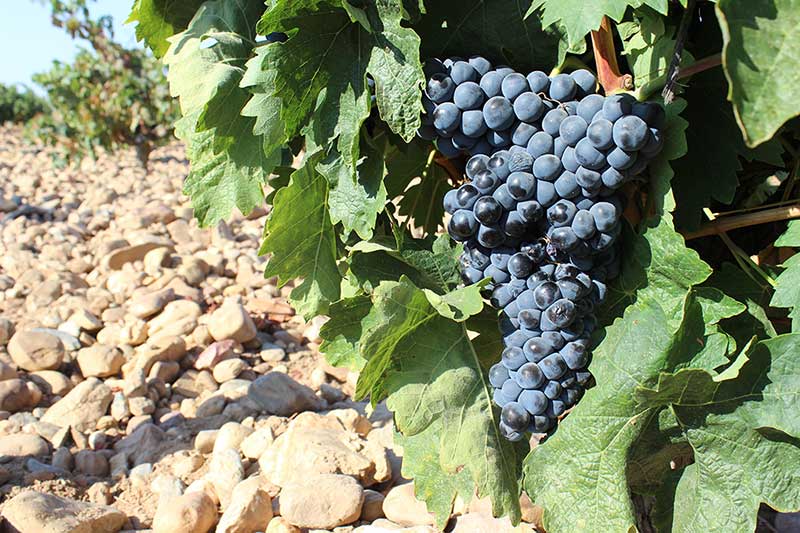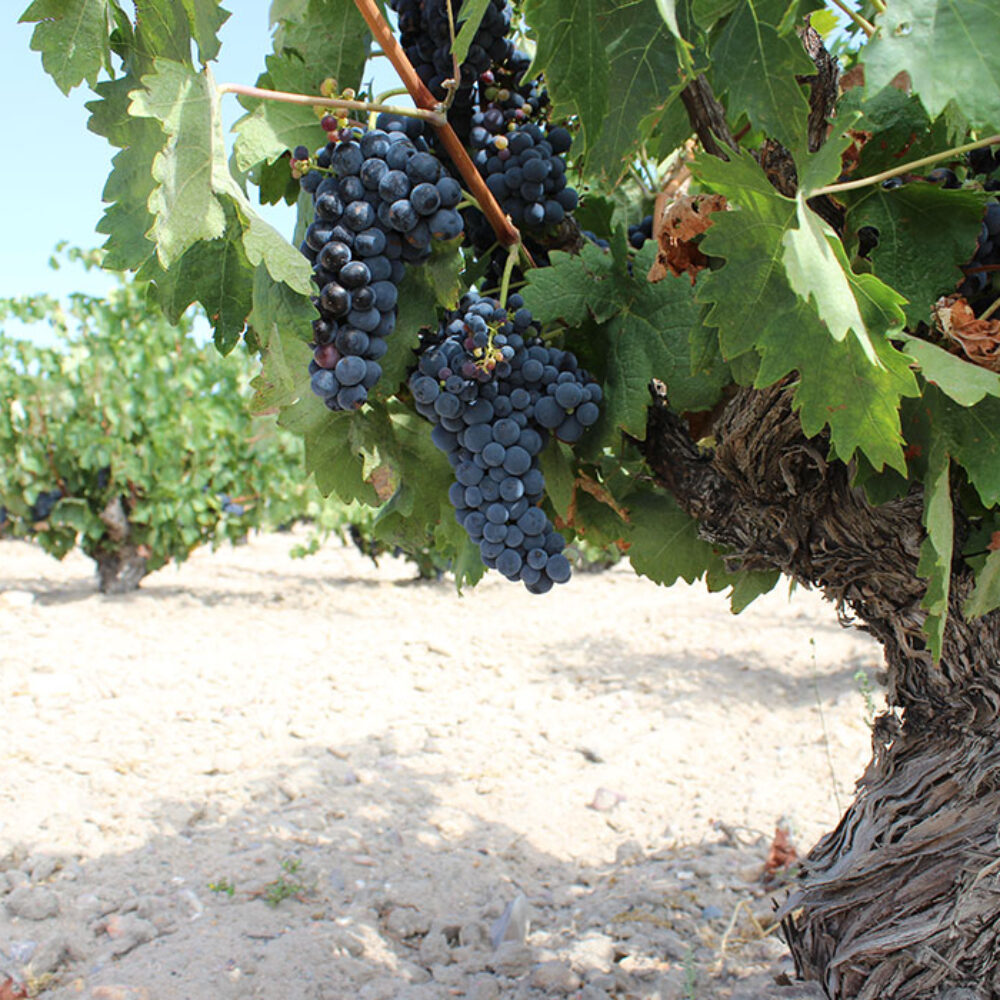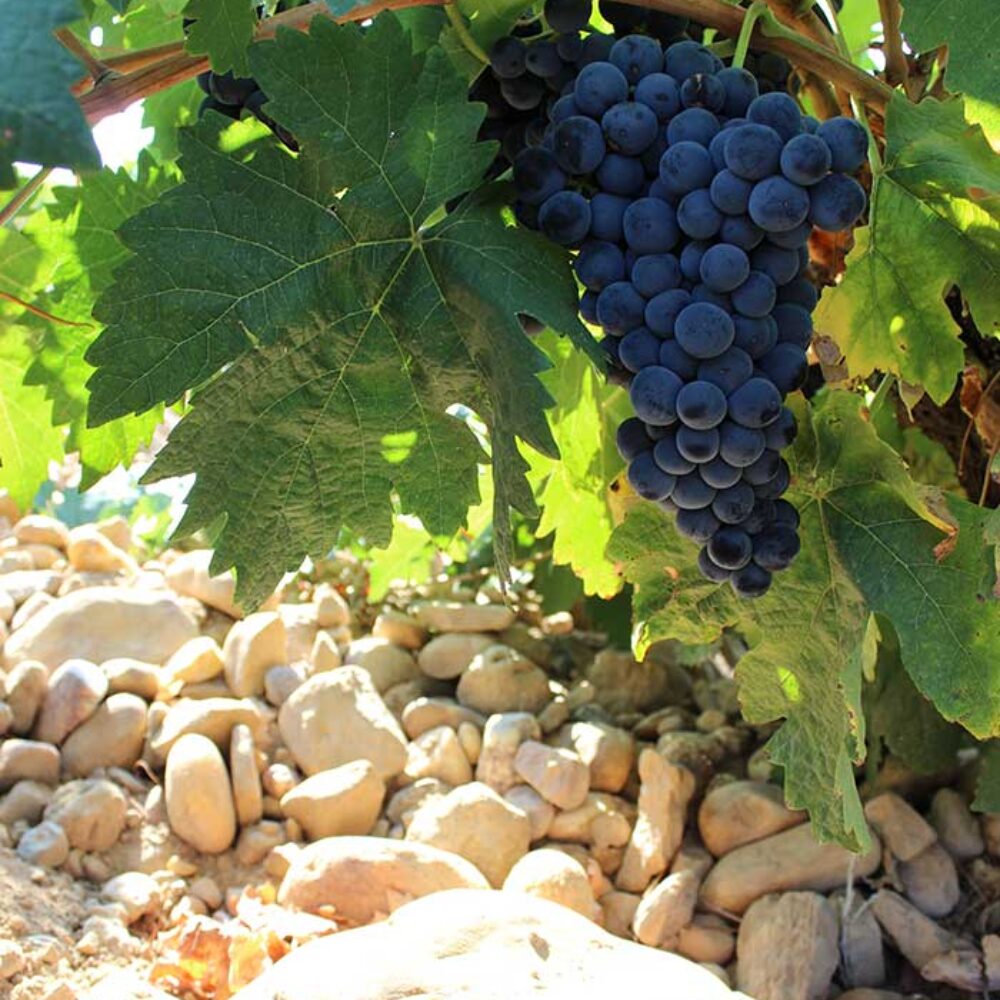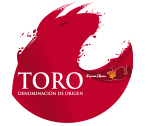Se considera que fueron los romanos (210 a.C) los verdaderos promotores de la viticultura en la cuenca del Duero, invadiendo el territorio anteriormente vacceo y destruyendo totalmente la ciudad a las órdenes del general cartaginés Anibal.
El 11 de enero de 1.505 se proclaman las 83 leyes en Toro, siendo esta sede de las Cortes; una ciudad que siglos más tarde se consolidaría como capital de provincia. Son numerosos los documentos que a lo largo de estos años ordenan, regulan y reconocen el cultivo de la vid y su importancia económica en la ciudad. El vino de Toro viajó al nuevo mundo bautizando su descubrimiento, debido a características que le hacían perdurar y conservarse en tan largos viajes.


TINTA DE TORO
Autóctona e irrepetible,
con nombre propio.


Tras la invasión filoxérica en España en el año 1.870 el cultivo de la vid sufre una gran reconversión, y es en Toro donde la variedad Tinta de Toro ancla sus raíces en terrenos arenosos sueltos y bien drenados, conservándose hasta nuestros días la multiplicación del viñedo en pie franco. En esta fecha Toro cuenta con Estación Enológica propia ubicada en la ciudad prestando servicios técnicos a las demandas vitivinícolas del momento. El 26 de mayo de 1933 a Toro se le otorga por primera vez la Denominación de Origen. (Publicación Gaceta 4 de junio de 1933)
En el año 1990 la Junta de Castilla y León se ve inmersa en un plan de selección clonal y sanitaria de la vid, rescatando y multiplicando las variedades autóctonas de la Comunidad, entre ellas la Tinta de Toro, la cual goza en este momento del sello de certificación como variedad autóctona, con nombre propio, con características agronómicas y ampelográficas bien definidas. El comercio de la misma se expide con etiqueta azul y su número de clon correspondiente.
CARACTERÍSTICAS
Color
Uva Tinta
Empleo principal
Vinificación
Extensión
D.O. Toro Variedad Autóctona
Porte de la cepa
Semierguido
Pámpanos
De contorno continuo, sin vellosidad y de coloración laminada intercalando tonos granates y verdes.
Zarcillos
Distribución en pares discontinuos, de longitud media, bi o trifurcados.
Hojas
De tamaño medio, pentagonal con cinco lóbulos y cinco senos bien definidos, de color verde intenso con brillo mate. Cuando finaliza el ciclo de maduración de la uva aparecen hojas cárdenas intercaladas.
Envés de la hoja
Nerviaciones principales blanquecinas, con pelos y bien definidas, internerviaciones poco definidas, también vellosas. En su conjunto el envés presenta una vellosidad arañosa, con una densidad de pelos media y de aspecto flexuoso, con el roce originan lanosidad.
Dientes de las hojas
Rectilíneos largos y no muy numerosos.
Seno peciolar
Con bordes superpuestos.
Senos laterales superiores e inferiores
Bien definidos y frecuentemente con bordes superpuestos. Entre los senos laterales e inferiores y el seno pecilar aparece una cicatriz que marca el contorno de dos senos o más.
Peciolo de las hojas
De coloración laminada entre verde y el rosáceo con tenue vellosidad.
Limbo
Ondulado
Racimos
Cilíndricos largos con hombros.
Uvas
Esféricas con ombligo aplastado de tamaño medio, de color azul negruzco, con pulpa incolora y hollejos finos. En la maduración aparecen venas coloreadas en la pulpa.
Pepitas
Normalmente nos encontramos dos o tres pepitas de tamaño medio-grande.


